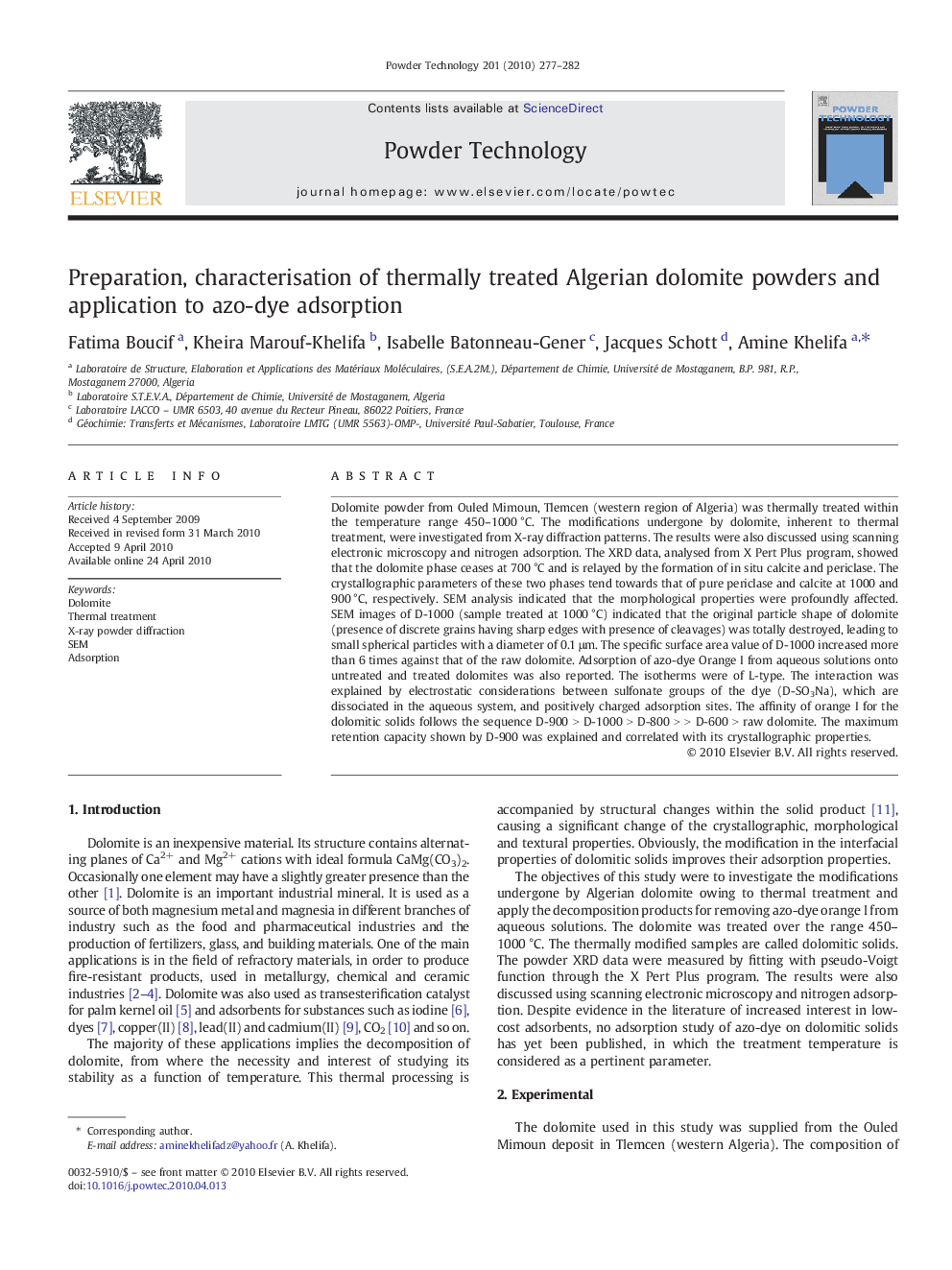| کد مقاله | کد نشریه | سال انتشار | مقاله انگلیسی | نسخه تمام متن |
|---|---|---|---|---|
| 237717 | 465721 | 2010 | 6 صفحه PDF | دانلود رایگان |

Dolomite powder from Ouled Mimoun, Tlemcen (western region of Algeria) was thermally treated within the temperature range 450–1000 °C. The modifications undergone by dolomite, inherent to thermal treatment, were investigated from X-ray diffraction patterns. The results were also discussed using scanning electronic microscopy and nitrogen adsorption. The XRD data, analysed from X Pert Plus program, showed that the dolomite phase ceases at 700 °C and is relayed by the formation of in situ calcite and periclase. The crystallographic parameters of these two phases tend towards that of pure periclase and calcite at 1000 and 900 °C, respectively. SEM analysis indicated that the morphological properties were profoundly affected. SEM images of D-1000 (sample treated at 1000 °C) indicated that the original particle shape of dolomite (presence of discrete grains having sharp edges with presence of cleavages) was totally destroyed, leading to small spherical particles with a diameter of 0.1 μm. The specific surface area value of D-1000 increased more than 6 times against that of the raw dolomite. Adsorption of azo-dye Orange I from aqueous solutions onto untreated and treated dolomites was also reported. The isotherms were of L-type. The interaction was explained by electrostatic considerations between sulfonate groups of the dye (D-SO3Na), which are dissociated in the aqueous system, and positively charged adsorption sites. The affinity of orange I for the dolomitic solids follows the sequence D-900 > D-1000 > D-800 > > D-600 > raw dolomite. The maximum retention capacity shown by D-900 was explained and correlated with its crystallographic properties.
Graphcial AbstractAlgerian dolomite powders were thermally treated and characterised by XRD, SEM and nitrogen adsorption. Dolomite was treated over the range 450–1000°C. The decomposition products were applied for removing azo-dye orange I from aqueous solutions. The relationship between physicochemical and adsorptive properties was also examined. The results indicate that dolomitic solids are potentially cost effective materials for azo-dyes adsorption.Figure optionsDownload as PowerPoint slide
Journal: Powder Technology - Volume 201, Issue 3, 12 August 2010, Pages 277–282